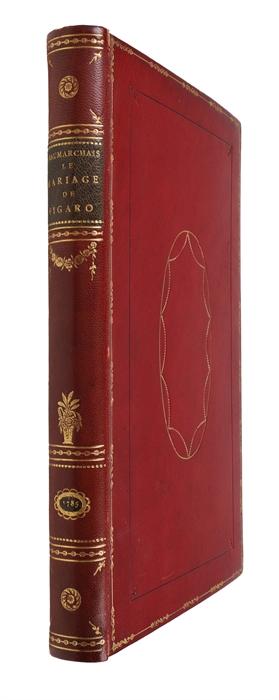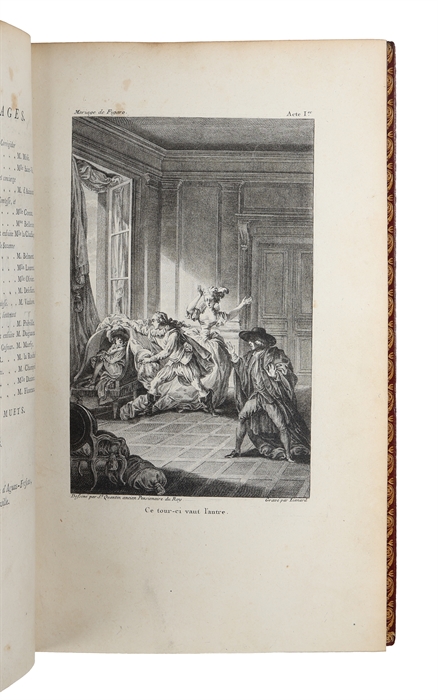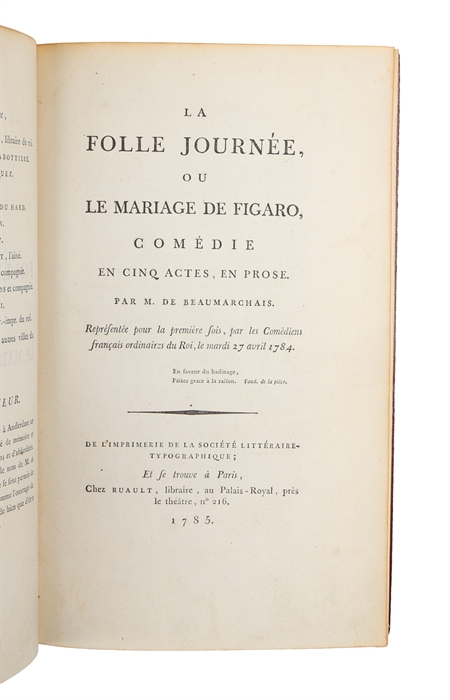BEAUMARCHAIS, (PIERRE-AUGUSTE CARON DE).
La folle journee, ou Le mariage de Figaro, Comedie en cinq actes, en prose. par M. de Beaumarchais, représentée pour la première fois par les Comédiens français ordinaires du Roi, le mardi 27 avril 1784.
Paris, Ruault, 1785.
Royal8vo (Bookblock: 247 x 147 mm). In a beautiful contemporary full red morocco binding (Anker Kyster) with gilt lettering and ornamentation to spine. Gilt borders to boards, inner gilt dentelles and gilt ornamentation to edges of boards. Single-line ruled fillets to boards and gilt oval shaped decoration centered on boards. All edges gilt. With very light occassional marginal browning. Leaf M8 and N4 with closed tear. Plate no. 2 with a few stains. An overall very nice large paper copy on vellum paper. Half title with list of 12 booksellers and "Avis de l' Editeur" regarding a pirated Amsterdam edition on the verso. LI, (1), (1)-199, (2) pp. + 5 engraved plates by Lienard, Halbou und Lingee, from the illustrations by St-Quentin.
The famous Kehl-edition (printed the same year as the original, also referred to as first edition, second issue – occasionally second edition), regarded as being the most beautiful and sought after early edition. Beaumarchais used it as a way to combat piracy and counterfeiting of his play and it became an object of great desire among 19th-century bibliophiles. The original edition appeared without illustrations, and almost immediately, five plates were added, consequently copies can be found with and without the plates. The plates were drawn by St Quentin and the first four were engraved by Malapeau and the fifth by Roi. The present edition printed in Kehl, with the new Baskerville type used for Voltaire, features the same five illustrations drawn by St Quentin for the original, but larger, more beautiful and engraved (plate 1, 3 and 5) by Liénard, (plate 2) by Halbou, (plate 4) by Lingée. (See Tchemerzine). “Le Mariage de Figaro" is the second play in Beaumarchais' Figaro trilogy following “The Barber of Seville” and preceding “The Guilty Mother”. It is a political and social satire aimed at aristocratic privilege and advocating for liberty and social justice. It was initially banned by Louis XVI, only to become an symbolic work of the pre-revolutionary period in France. Tchemerzine II, p. 15
This Kehl edition is often seen as both a literary milestone and a masterpiece of 18th-century printing, representing Beaumarchais' genius as both a playwright and publisher.
PMM 230
Order-nr.: 61665




